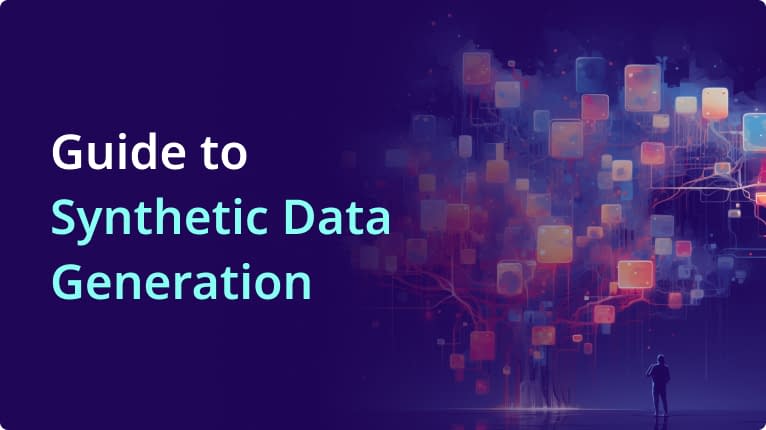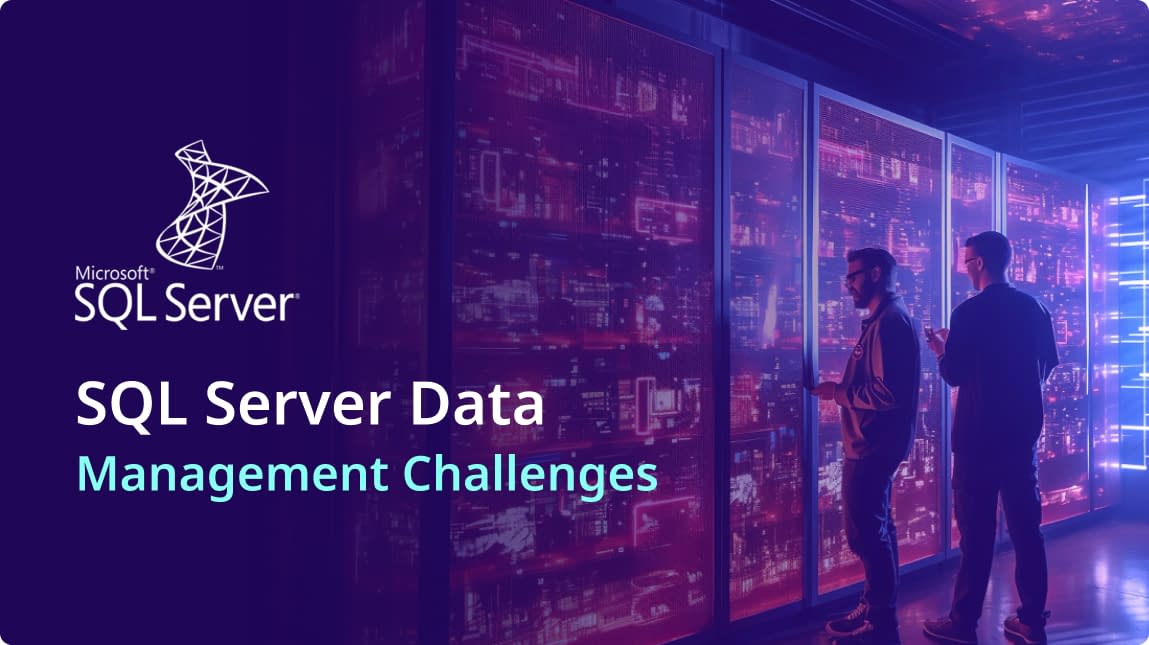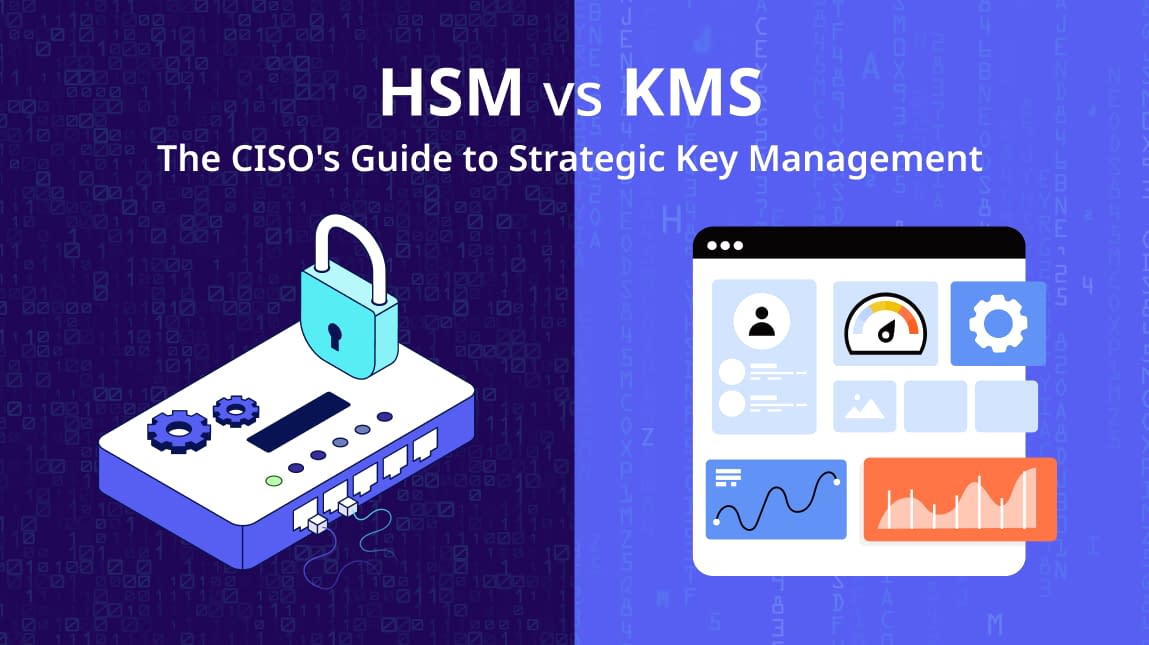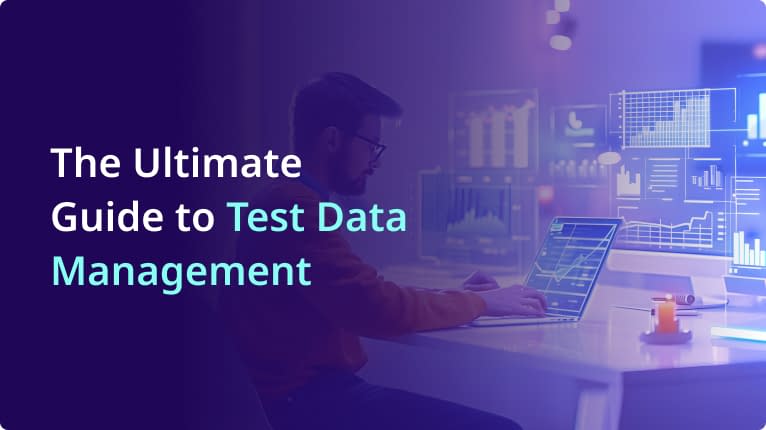The rapidly evolving landscape of data privacy regulations, coupled with the increasing demands of AI/ML development and secure testing practices, is driving organizations to seek more advanced data protection strategies. While static data masking remains a critical component, synthetic data generation is emerging as a highly complementary tool for addressing these complex challenges. Synthetic data generation is gaining momentum as a key source of data for development, testing, model training, and data sharing while safeguarding sensitive information.
What Is Synthetic Data Generation?
Synthetic data generation (SDG) is the practice of producing entirely new, artificial records that meticulously replicate the statistical patterns, relationships, and characteristics of real-world production data, critically, without containing any actual, identifiable individuals or real-world identities. This means that every piece of data in a synthetic dataset is fabricated, yet it behaves statistically like its genuine counterpart.
Leading synthetic data generation solutions leverage sophisticated techniques that combine deterministic, rule-based logic (for maintaining specific structural constraints or business rules) with cutting-edge AI/ML approaches, such as Generative Adversarial Networks (GANs) or transformer models. These advanced algorithms allow synthetic data generation tools to learn the intricate nuances and distributions of real data, enabling them to create realistic, yet entirely privacy-preserving datasets.
The growing recognition of synthetic data generation’s importance is reflected in Gartner’s most recent reports related to test data management. Gartner’s 2024 Market Guide for Data Masking observes that “static data masking (SDM) vendors frequently lack advanced capabilities such as synthetic data generation… which are increasingly requested by end members.” Gartner further recommends that development and security teams “prioritize SDM products that include the creation of synthetic data—synthetic records, events or tabular synthetic data—as this can greatly speed up existing test-data-management processes and enhance security of AI/ML model training.”
Key Use Cases for Synthetic Data Generation
Synthetic data generation is suitable for a variety of critical functions, particularly where privacy, data scarcity, or specific scenario testing are paramount:
- Dev/Test & QA: Synthetic data generation allows development, testing, and quality assurance teams to quickly populate non-production environments with realistic data without exposing any Personally Identifiable Information (PII) or sensitive business data. This accelerates continuous integration/continuous delivery (CI/CD) pipelines by eliminating delays associated with data provisioning and anonymization of real data.
- AI/ML Model Training: Data is the lifeblood of AI and Machine Learning models. With synthetic data you can generate additional, balanced samples, especially when real production data is scarce, imbalanced, or too sensitive for direct use. This ensures that models are trained on diverse and representative datasets, leading to more robust and unbiased AI outcomes without privacy risks.
- Data-Sharing & SaaS Demos: Providing realistic datasets to external partners, third-party vendors, or for Software-as-a-Service (SaaS) product demonstrations traditionally involves complex legal reviews, data use agreements, and extensive masking efforts. Synthetic data simplifies this by enabling organizations to provide realistic yet completely anonymous datasets, significantly reducing compliance hurdles and accelerating collaboration.
- Edge-Case Simulation: Real-world production data may not contain sufficient examples of rare but critical scenarios, such as specific types of fraud, extreme financial market events, or unusual IoT anomalies. Synthetic data generation tools empower teams to create these rare, synthetic scenarios on demand, allowing for thorough testing of systems’ resilience and accuracy in handling unforeseen situations.
While synthetic data can bring significant advantages, it is not a one-size-fits-all solution. In scenarios where precise, production-like behavior is essential, such as integration testing across multiple systems, regression testing on legacy applications, or late-stage UAT, synthetic data may fail to capture the subtle complexities and cross-references inherent in real environments.
In these cases, static data masking is often the better approach. By transforming actual production data while preserving its schema, data types, referential integrity, and statistical distribution, masked data offers the realism needed to validate application logic, business rules, and performance at scale. This is especially critical for financial systems, healthcare applications, and regulatory workflows where false positives or broken workflows from artificial data could derail go-live readiness.
How Does Synthetic Data Compare with Masked Data?
Neither synthetic data generation nor traditional data masking (including tokenization) is universally “better”; rather, they serve distinct but often complementary purposes based on the specific use case and privacy requirements. Understanding their differences is key to implementing an effective data protection strategy.
- Static data masking preserves the exact structural relationships and referential integrity of production data, which can be absolutely critical for late-stage User Acceptance Testing (UAT) where system functionality must be validated against precise data interactions, or for internal regulatory reports that require direct correlations.
- Synthetic data generation can offer enhanced flexibility and privacy, particularly when large volumes of data are required, or when specific, rare patterns need to be simulated without exposing any original sensitive information. However; it may be challenging to replicate the exact structural relationships of production data, and preserve full referential integrity. In particular, generating realistic multi-table relationships, complex constraints, or edge cases involving foreign keys often requires significant manual configuration or advanced modeling techniques. Additionally, synthetic data may not always reflect the nuanced behaviors or outliers found in real datasets, which can limit its reliability for testing scenarios that depend on high-fidelity data interactions.
Many organizations find the optimal strategy lies in blending the two approaches: for instance, masking a small, highly sensitive slice of production data for compliance-driven testing that requires strict data integrity, while generating synthetic datasets for CI/CD pipelines, extensive AI model experimentation, or broader development environments.
Platforms Offering Synthetic Data Generation
The market for synthetic data generation is growing, with solutions emerging from dedicated SDG-first vendors and being incorporated into broader data masking and management suites.
Synthetic Data Generation Focused Solutions: These companies specialize in synthetic data generation, often offering highly sophisticated AI/ML models for statistical fidelity.
- K2View: Known for its entity-based data model, K2View now incorporates Generative AI-powered tabular synthesis to create comprehensive synthetic datasets.
- Gretel.ai, Tonic.ai, Hazy, GenRocket: These providers focus heavily on the balance between privacy and utility, often offering advanced capabilities like privacy and utility scoring to ensure the synthetic data meets specific criteria for AI workloads and other demanding applications.
Data-Masking Suites with Built-In Synthetic Data Generation: Recognizing the complementary nature of masking and synthetic data masking, several established data masking vendors are integrating synthetic data capabilities into their broader platforms.
- Accutive Data Discovery & Masking (ADM): ADM provides a comprehensive solution that combines automated data discovery, robust static data masking capabilities, and on-demand synthetic data generation. It offers preconfigured discovery and masking for complex data structures and industry-specific use cases, such as integration with core banking systems for provisioning secure test data to financial institutions.
- Delphix: Delphix, data virtualization platform by Perforce, injects synthetic datasets into its virtual databases. This allows DevOps teams to provision realistic, privacy-compliant data instantly and on-demand, accelerating development and testing cycles.
- Informatica TDM (Test Data Management): Informatica’s suite adds rule-based synthesis alongside its extensive data masking tools, providing a more versatile approach to test data management.
Choosing a platform that supports both masking and synthetic data generation aligns with Gartner’s recommendation. It provides teams with the essential flexibility to select the right data protection method for each specific use-case, optimizing for privacy, utility, and development speed.
Integrating Synthetic Data into DevOps Pipelines
For synthetic data generation to deliver its full benefits, it must be seamlessly integrated into modern DevOps and CI/CD (Continuous Integration/Continuous Delivery) pipelines. This ensures automated, consistent, and secure data provisioning.
- Shift-Left Discovery: Implementing data discovery tools earlier in the development lifecycle is crucial. This means classifying sensitive fields within source control and code repositories even before build pipelines fully run, allowing for proactive application of masking or synthesis rules.
- On-Demand Generation: Exposing synthetic data generation services through well-defined RESTful APIs or command-line interfaces (CLIs) empowers CI tools (such as Jenkins, GitLab CI/CD, or Azure DevOps) to request fresh, privacy-compliant synthetic datasets on demand for every new build or test run, ensuring test environments are always current.
- Version Control Seeds: To ensure deterministic test reruns and maintain consistency, it’s a best practice to store the “seeds” or cryptographic hashes used for synthetic data generation within your version control system (e.g., Git). This allows for reproducible results, critical for debugging and validating fixes.
- Policy-as-Code: Define synthesis and masking rules as “Policy-as-Code” using declarative formats like YAML or Terraform. This approach promotes consistency, enables peer review of data privacy rules, and provides transparent audit trails for compliance.
- Automated Teardown: Implement automated processes to remove temporary synthetic datasets from non-production environments after tests are completed. This minimizes cloud storage costs and further reduces any residual data exposure risks.
While synthetic data offers strong privacy guarantees and flexibility for test automation, it may not be sufficient or appropriate for all situations. In scenarios that require strict preservation of data relationships, cross-system dependencies, or highly realistic edge cases, such as performance benchmarking, integration testing, or UAT, synthetic data may fall short. In such cases, data masking or hybrid strategies that combine synthetic and realistic masked data may provide more reliable results.
What Does Generative AI Mean for Synthetic Data?
Generative AI is fundamentally reshaping the capabilities and potential of synthetic data generation. The advancements in AI are making synthetic data even more powerful and accessible:
- LLMs + Tabular GANs: The combination of Large Language Models (LLMs) and advanced Tabular Generative Adversarial Networks (GANs) enables SDG engines to capture even more complex correlations and intricate data relationships. This results in the production of exceptionally high-fidelity and realistic synthetic recordsautomatically, without extensive manual configuration.
- Prompt-Based Templates: Testers and business users can now leverage prompt-based templates to describe specific data requirements or challenging edge cases in natural language. This innovation allows them to receive tailored synthetic data on demand, dramatically simplifying the creation of targeted test scenarios.
- Quality Scoring Agents: AI-powered Quality Scoring Agents are being developed to iteratively refine generated datasets. These agents assess the synthetic data against predefined privacy, statistical fidelity, and utility targets, ensuring that the output meets strict quality standards before deployment.
Gartner predicts that by 2025, synthetic data will enable organizations to avoid 70% of privacy-violation sanctions, starkly highlighting its growing importance as a proactive compliance measure alongside static data masking techniques.
Conclusion: Getting Started with Synthetic Data
Synthetic data generation is best viewed not as a replacement for, but as a powerful and essential complement to established masking and tokenization techniques. Its ability to create privacy-preserving yet statistically rich datasets offers unique advantages for modern development, testing, and AI initiatives. By intelligently combining SDG with existing masking strategies, organizations can achieve an optimal balance of data privacy, statistical realism, and development speed across their varied use-cases. This synergistic approach ensures robust compliance without compromising the agility and innovation necessary in today’s data-driven world.
Accutive Security’s data-privacy experts can provide the specialized guidance you need:
- Assess your test-data bottlenecks: We identify critical points of friction and inefficiency in your current data provisioning workflows.
- Recommend an optimal mix of masking and synthetic data: Based on your specific compliance needs, data types, and use-cases, we can advise on the most effective combination of solutions.
- Automate pipelines that integrate smoothly with your CI/CD tooling: We help design and implement automated data provisioning pipelines that seamlessly fit into your existing DevOps and CI/CD processes, maximizing efficiency and consistency.












Comment